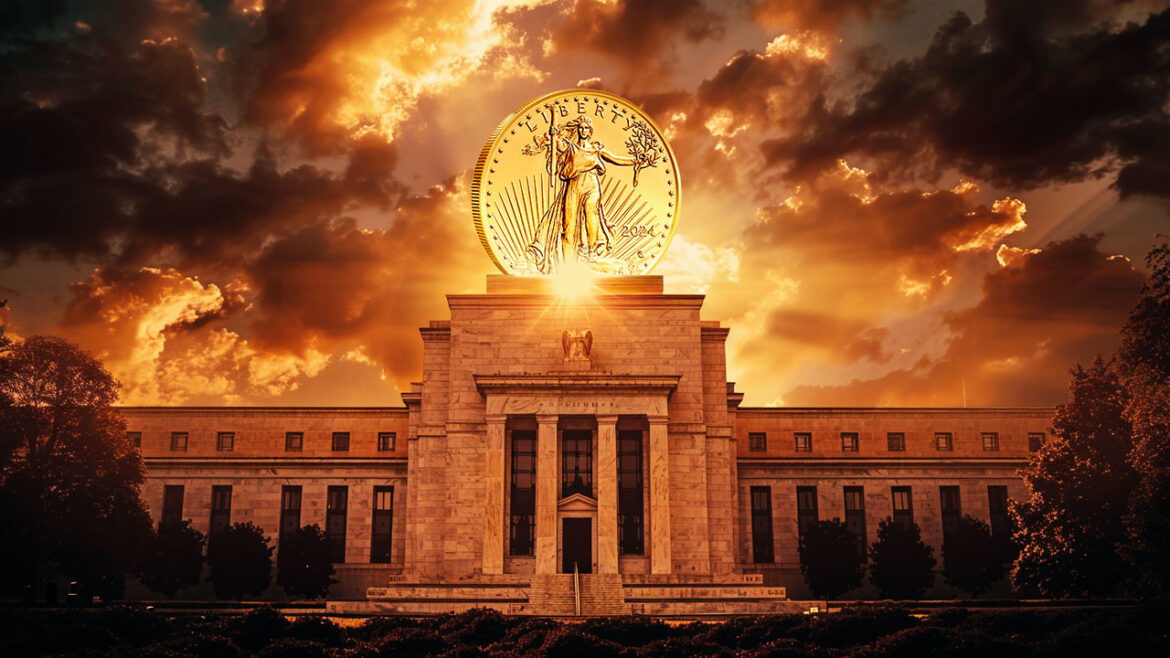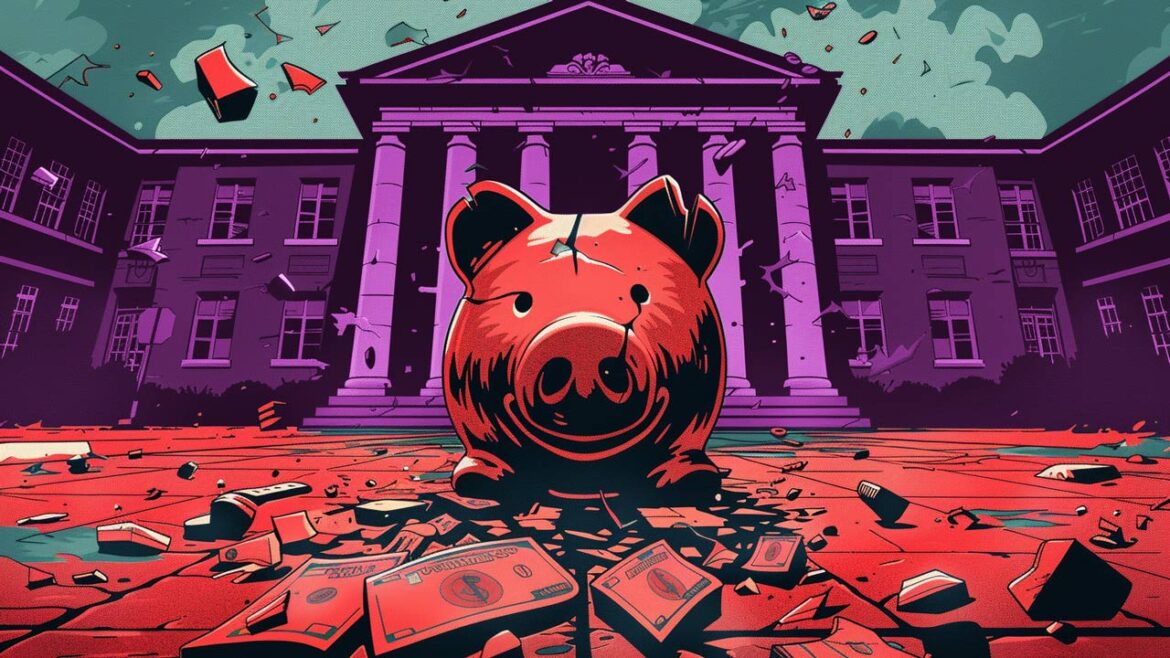Precious metals are apparently waking up. And here is where you can find the best deals.
Site:
Precious metals news
Apr 15, 2024 - 11:13:38 EDT
Crude oil prices experienced a modest decline in reaction to the recent Iranian attack on Israel. West Texas Intermediate (WTI) crude for May delivery fell by 1%, closing at $84.83 per barrel, while Brent crude, the global benchmark, dropped 1.2% to $89.41 per barrel after briefly exceeding $90. Prices for May gasoline and heating oil also saw reductions of 1.2% and 1.6%, respectively. Natural gas prices decreased by 2.4%. The market's subdued response reflects investors' expectations that the attack, which was largely neutralized by Israel's defenses, would not escalate into a broader regional conflict.
Silver demand has been significantly driven by the growth in solar energy installations, particularly in photovoltaic (PV) cells. Last year, the demand for silver in PV cells reached a new high of 190 million ounces, up from 100 million in 2020, now accounting for about 30% of industrial silver demand. This increase is largely attributed to the rapid expansion of PV manufacturing and installation in China, which constitutes approximately 85% of the global manufacturing capacity. In 2023, China's new solar installations nearly matched the total global installations of the previous year. Looking ahead, it's projected that solar silver demand could surpass 200 million ounces in 2024.
 ZeroHedge: One Bank [Finally] Says Quiet Part Out Loud On Gold Manipulation
ZeroHedge: One Bank [Finally] Says Quiet Part Out Loud On Gold ManipulationApr 15, 2024 - 10:24:27 EDT
In the latest "Greed & Fear" report by Chris Wood of Jefferies, a prominent global capital markets firm, a significant portion is dedicated to discussing gold, touching on allegations of market manipulation. Wood, who is known for his expertise on various markets, particularly in Asia, and respected for his macroeconomic analyses, cautiously approaches the topic of gold price manipulation, suggesting it poses the greatest risk to the current gold rally. He also notes a recent significant transaction where China reportedly purchased oil from Russia using gold, underlining his credibility and depth of understanding in these complex market dynamics.
Major Wall Street banks have significantly raised their price targets for gold. This upward revision is influenced by increased safe-haven demand amid rising geopolitical tensions in the Middle East, although it seemingly contradicts the current Federal Reserve policy and trends in gold ETF outflows. The puzzling market dynamics have led to speculative forecasts, with Goldman Sachs setting a target of $2,700, Bank of America $3,000, and UBS an ambitious $4,000 per ounce.
Apr 15, 2024 - 09:46:23 EDT
Gold prices have climbed for four consecutive weeks, now surpassing $2,410 per ounce. In light of this sustained increase, several analysts have revised their forecasts, now projecting some incredibly bullish gold forecasts.
Apr 15, 2024 - 09:29:41 EDT
Following the recent attacks by Iran on Israel, significant market volatility is expected, as described by Peter Spina of GoldSeek.com. The heightened geopolitical tensions may lead to a "liquidity event" in financial markets, potentially causing a selloff in stocks that could spill over to precious metals. This scenario could present a unique buying opportunity for investors in gold and silver. The underlying fear and the addition of a 'fear-war premium' to gold prices suggest that precious metals, along with oil, could see strong market openings and sustained buying interest, barring any sudden changes in the current situation.
After soaring to an unprecedented high, gold prices moderated on Monday, reflecting a cautious recalibration in the market following a spike driven by escalating Middle East conflicts. Spot gold inched up slightly by 0.3% to $2,349.67 per ounce, pulling back from Friday's record-setting peak of $2,431.29, catalyzed by anticipations of an Iranian counterstrike. Meanwhile, U.S. gold futures mirrored this tepid sentiment with a slight decrease of 0.3%, settling at $2,366.10. The heightened tensions saw Iran executing a bold aerial assault on Israel, using drones and missiles as retribution for an alleged Israeli attack on its consulate. This geopolitical turmoil underscores gold's status as a refuge for investors during times of international uncertainty.
Gold rose last week as geopolitical tensions flared with Iran's attack on Israel, hinting at a volatile climb before slipping back below last week's record highs. The conflict's escalation initially pushed investors towards the safety of gold, driving prices up 1.2% as they braced for further unrest. However, despite the significant increase in hostilities, the surge was short-lived. Technical signals suggested the rally was overstretched, prompting a round of sell-offs that pulled gold prices down from their peak. Although the precious metal breached the $2,400 mark, it settled lower as the market digested the potential impacts of ongoing tensions in the Middle East. Investors remain on edge, watching closely for any further developments that might reignite the rush to this traditional safe haven.
Beneath the veneer of headline job gains, the American economy teeters on the brink: native employment dwindles as part-time and immigrant jobs surge. Government hiring camouflages looming recession warnings. Inflation and political blunders worsen the crisis, fueling public outrage at the establishment's mishandling of the economy.
 FOOD INFLATION STICKER SHOCK & HEADING HIGHER: Should We Blame The Grocery Stores For Rising Prices
FOOD INFLATION STICKER SHOCK & HEADING HIGHER: Should We Blame The Grocery Stores For Rising PricesApril 13, 2024
While the Consumer Price Index is much lower than the peak of 9.1% in June 2022, Food Prices are still relatively high and don't look to be coming down any time soon. Some suggest this is due to grocery stores overcharging their customers...
 Dollar Rises as Geopolitical Tensions Mount; Oil Prices Climb Amid Middle East Concerns
Dollar Rises as Geopolitical Tensions Mount; Oil Prices Climb Amid Middle East ConcernsApr 12, 2024 - 15:41:26 EDT
The U.S. dollar strengthened and oil prices rose amid escalating geopolitical tensions and uncertainties around interest rate strategies between the U.S. and Europe. On Wall Street, major indices fell, influenced by disappointing earnings from leading banks as the first-quarter earnings season began. Additionally, global stock markets were affected, with the MSCI's global index dropping 1.23%. Concerns about potential retaliation from Iran following an airstrike on its embassy in Damascus, which it attributed to Israel, also weighed heavily on market sentiments.
With a hot CPI report casting a shadow of doubt on the likelihood of a June interest rate cut, all eyes are on the Fed. But they’ve caught themselves in a “damned if they do, damned if they don’t” moment for the economy — and the news for gold is good regardless.
In this enlightening video, join our host Mike Maloney and esteemed guest Lobo Tiggre from Independent Speculator.com
It’s no secret that the American public is wildly ignorant of many issues that are central to the success of our nation. Just a generation ago it would have been unthinkable that less than half of the American population could recognize all three branches of government. America is in most cases far less educated about its government than citizens of even less freedom-oriented nations.
Gold has recently reached a new all-time high, surpassing the $2,400 mark, influenced by ongoing geopolitical tensions and the anticipation of U.S. interest rate cuts. On Friday, gold futures for June delivery climbed 1.7%, reaching $2,414 per ounce, closely following a record close at $2,372.70 on Thursday. This marks a significant year-to-date increase of over 14%. Concurrently, silver also saw a notable rise, increasing by 3.3% to $29.18 an ounce. The upward trend in precious metals, which began in early March, is largely driven by market reactions to potential threats of conflict between Iran and Israel, as well as mixed economic data from the U.S. that could influence Federal Reserve policies.
Silver prices have recently surged, overtaking the gains made by gold this year, with the metal reaching its highest price in nearly three years. Despite a general downturn in both metals during part of Thursday's trading session, silver’s recovered nicely on Friday peaking at $29.50/oz. Gold also saw significant gains, with futures climbing by to a record high of $2,417 an ounce on Comex, marking a 14.5% increase year to date. This upward trend in precious metals comes despite the pressures of rising Treasury yields and a strong U.S. dollar, which have traditionally acted as obstacles to such gains.
In the first two months of 2024, Hong Kong experienced a modest increase in jewelry exports and retail sales, signaling a steady recovery in business and consumer sentiment. According to the Census and Statistics Department, jewelry shipments rose by 6% year-over-year to approximately US$4.4 billion. Retail sales of jewelry, watches, clocks, and valuable gifts also increased by 8.8% to around US$1.3 billion during the same period, despite a slight dip in February's sales. This growth is attributed to improved exports to China and the US, enhanced household incomes, and government efforts to boost consumer spending, although changing consumption patterns continue to challenge the sector.
Gold prices soared to a new record high, surpassing $2,400 per ounce, amid escalating Middle East tensions and fears of retaliation following an Israeli strike in Syria. The surge in demand for gold, seen as a more reliable hedge against geopolitical risks than government bonds, was further fueled by U.S. inflation concerns, according to Mohamed A. El-Erian. Additionally, gold's rise has been supported by increased purchases by central banks, including China, and speculation about potential Federal Reserve rate cuts in 2024, despite recent robust U.S. inflation data complicating the economic forecast.
JPMorgan Chase CEO Jamie Dimon issued a warning about looming threats to the economy, citing persistent inflation, global conflicts, and the Federal Reserve's tightening policies. Dimon's concerns come amidst ongoing worries about inflation, which has remained consistently higher than expected and above the Fed's 2% target. As a result, market expectations for interest rate cuts have significantly decreased, with forecasts now anticipating only one or two cuts totaling at most half a percentage point, compared to earlier expectations of up to seven cuts.
Demand for safe-haven assets has propelled gold to an unprecedented rally, reaching all-time highs. On Friday, spot gold increased by 0.9% to $2,395.66 per ounce and even touched a record peak of $2,400.35, culminating in a nearly 3% rise for the week. U.S. gold futures also saw a significant jump, rising 1.8% to $2,414.30. This surge in gold prices is driven by escalating geopolitical tensions in the Middle East and economic uncertainties surrounding China. Ricardo Evangelista, a senior analyst at ActivTrades, notes that gold prices may continue to climb due to increased central bank purchases and a heightened investor demand for safe-haven assets amid growing geopolitical conflicts.








